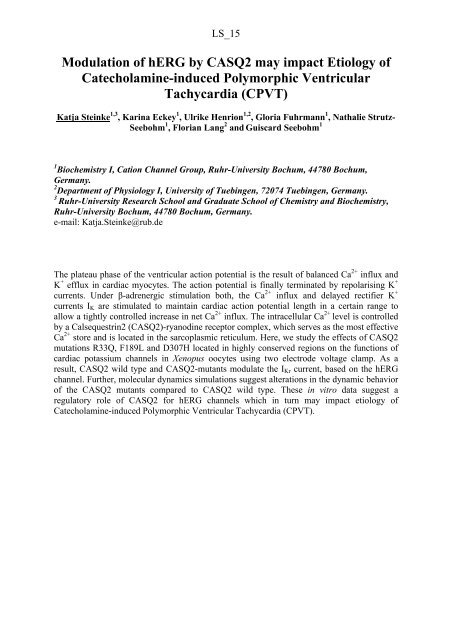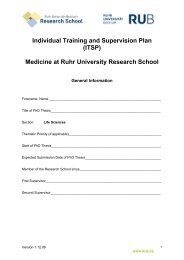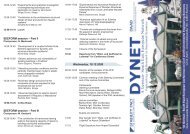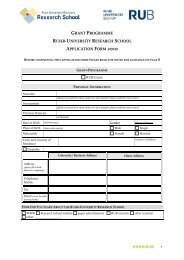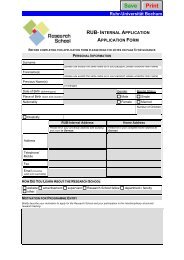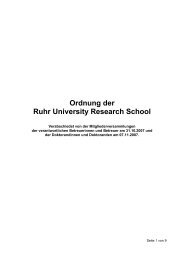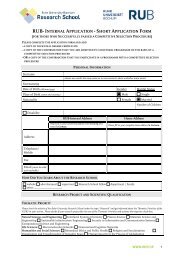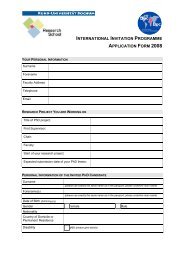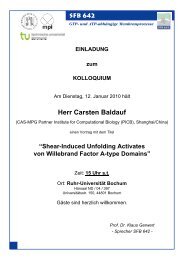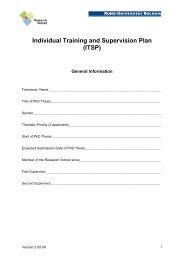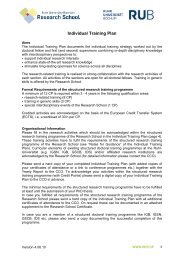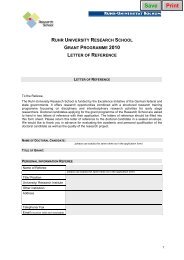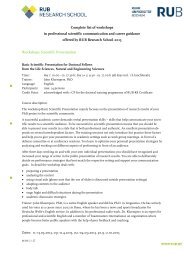Section Days abstract book 2010.indd - RUB Research School ...
Section Days abstract book 2010.indd - RUB Research School ...
Section Days abstract book 2010.indd - RUB Research School ...
You also want an ePaper? Increase the reach of your titles
YUMPU automatically turns print PDFs into web optimized ePapers that Google loves.
LS_15<br />
Modulation of hERG by CASQ2 may impact Etiology of<br />
Catecholamine-induced Polymorphic Ventricular<br />
Tachycardia (CPVT)<br />
Katja Steinke 1,3 , Karina Eckey 1 , Ulrike Henrion 1,2 , Gloria Fuhrmann 1 , Nathalie Strutz-<br />
Seebohm 1 , Florian Lang 2 and Guiscard Seebohm 1<br />
1<br />
Biochemistry I, Cation Channel Group, Ruhr-University Bochum, 44780 Bochum,<br />
Germany.<br />
2<br />
Department of Physiology I, University of Tuebingen, 72074 Tuebingen, Germany.<br />
3<br />
Ruhr-University <strong>Research</strong> <strong>School</strong> and Graduate <strong>School</strong> of Chemistry and Biochemistry,<br />
Ruhr-University Bochum, 44780 Bochum, Germany.<br />
e-mail: Katja.Steinke@rub.de<br />
The plateau phase of the ventricular action potential is the result of balanced Ca 2+ influx and<br />
K + efflux in cardiac myocytes. The action potential is finally terminated by repolarising K +<br />
currents. Under β-adrenergic stimulation both, the Ca 2+ influx and delayed rectifier K +<br />
currents IK are stimulated to maintain cardiac action potential length in a certain range to<br />
allow a tightly controlled increase in net Ca 2+ influx. The intracellular Ca 2+ level is controlled<br />
by a Calsequestrin2 (CASQ2)-ryanodine receptor complex, which serves as the most effective<br />
Ca 2+ store and is located in the sarcoplasmic reticulum. Here, we study the effects of CASQ2<br />
mutations R33Q, F189L and D307H located in highly conserved regions on the functions of<br />
cardiac potassium channels in Xenopus oocytes using two electrode voltage clamp. As a<br />
result, CASQ2 wild type and CASQ2-mutants modulate the IKr current, based on the hERG<br />
channel. Further, molecular dynamics simulations suggest alterations in the dynamic behavior<br />
of the CASQ2 mutants compared to CASQ2 wild type. These in vitro data suggest a<br />
regulatory role of CASQ2 for hERG channels which in turn may impact etiology of<br />
Catecholamine-induced Polymorphic Ventricular Tachycardia (CPVT).


